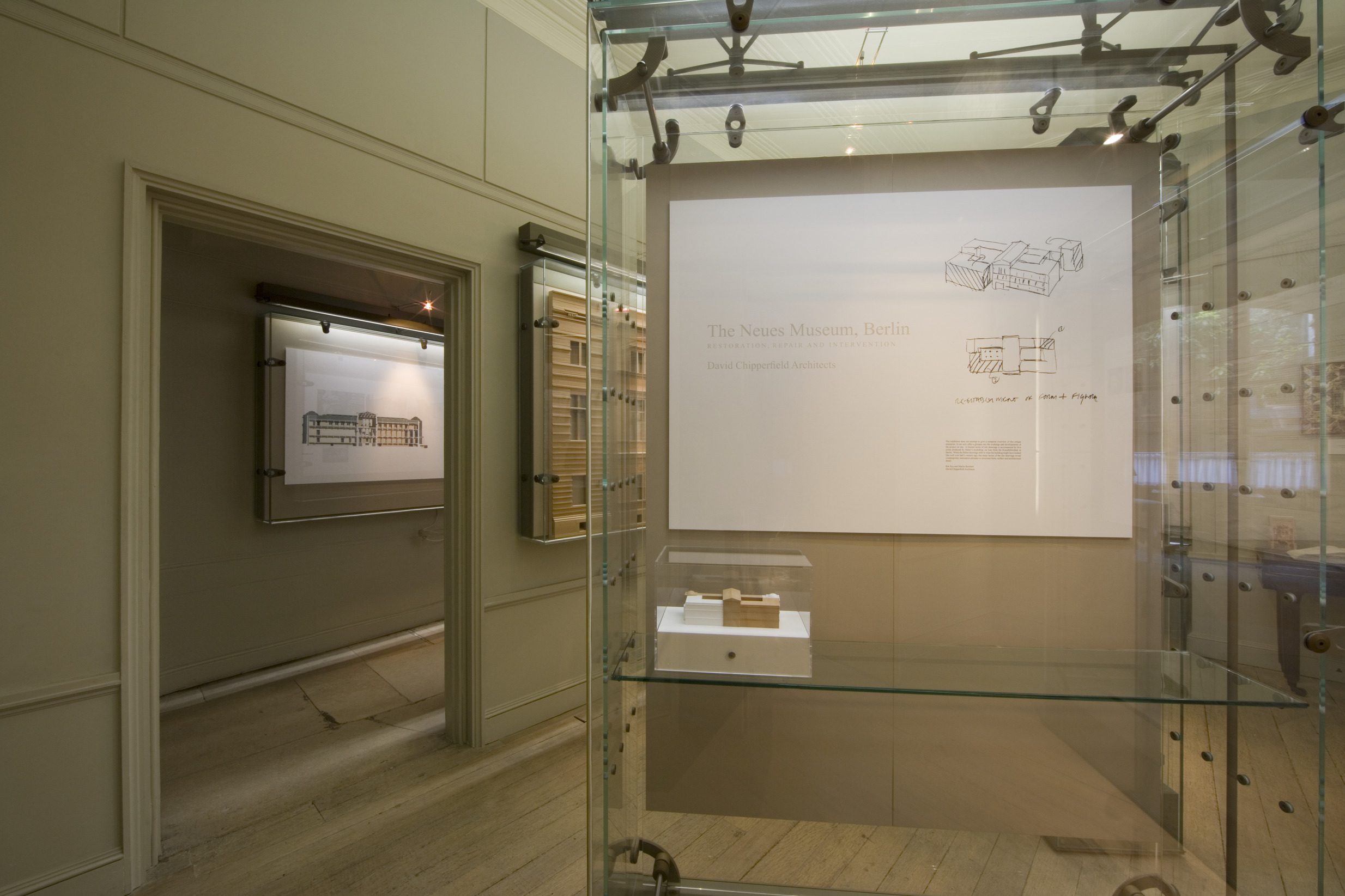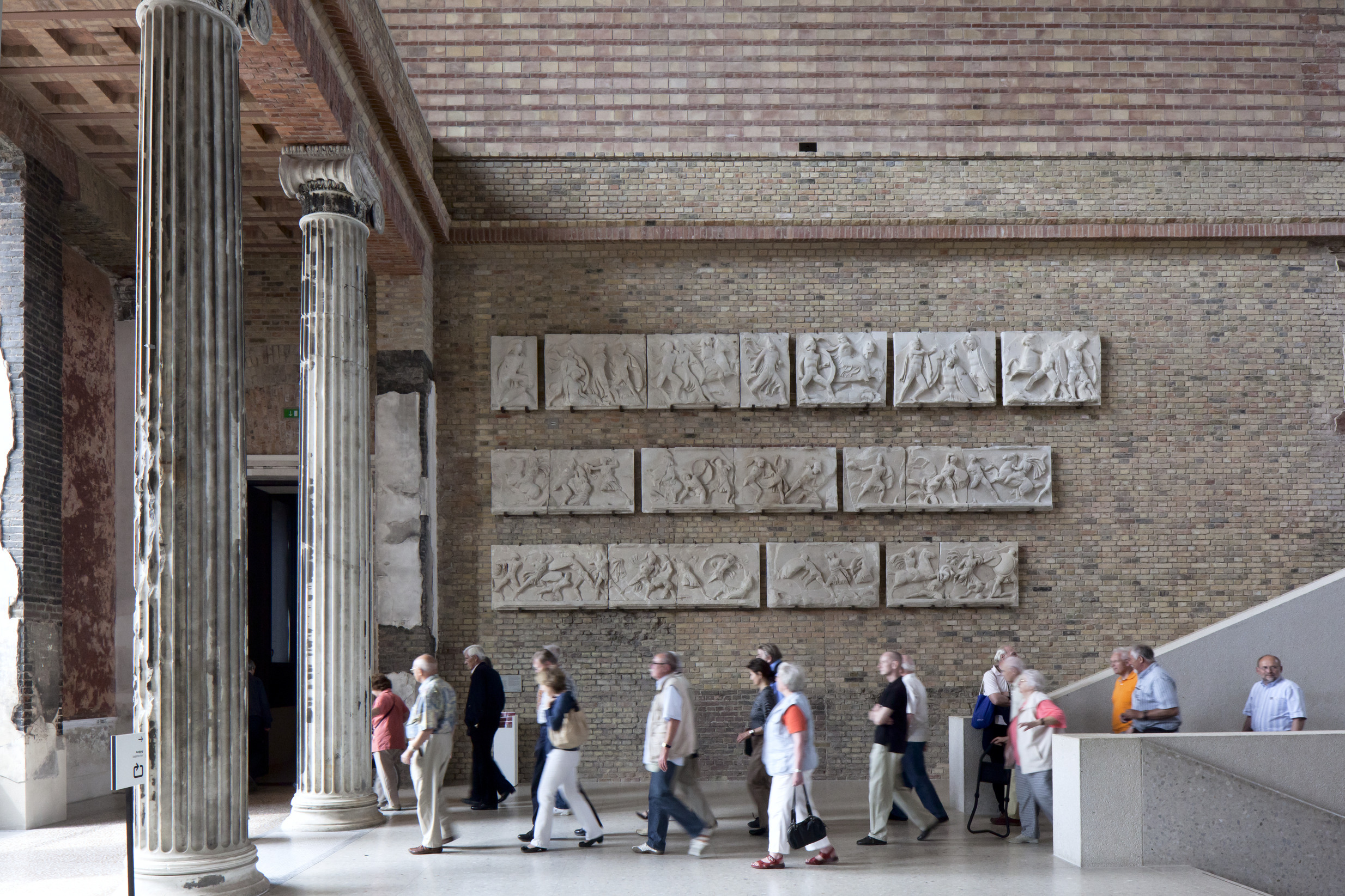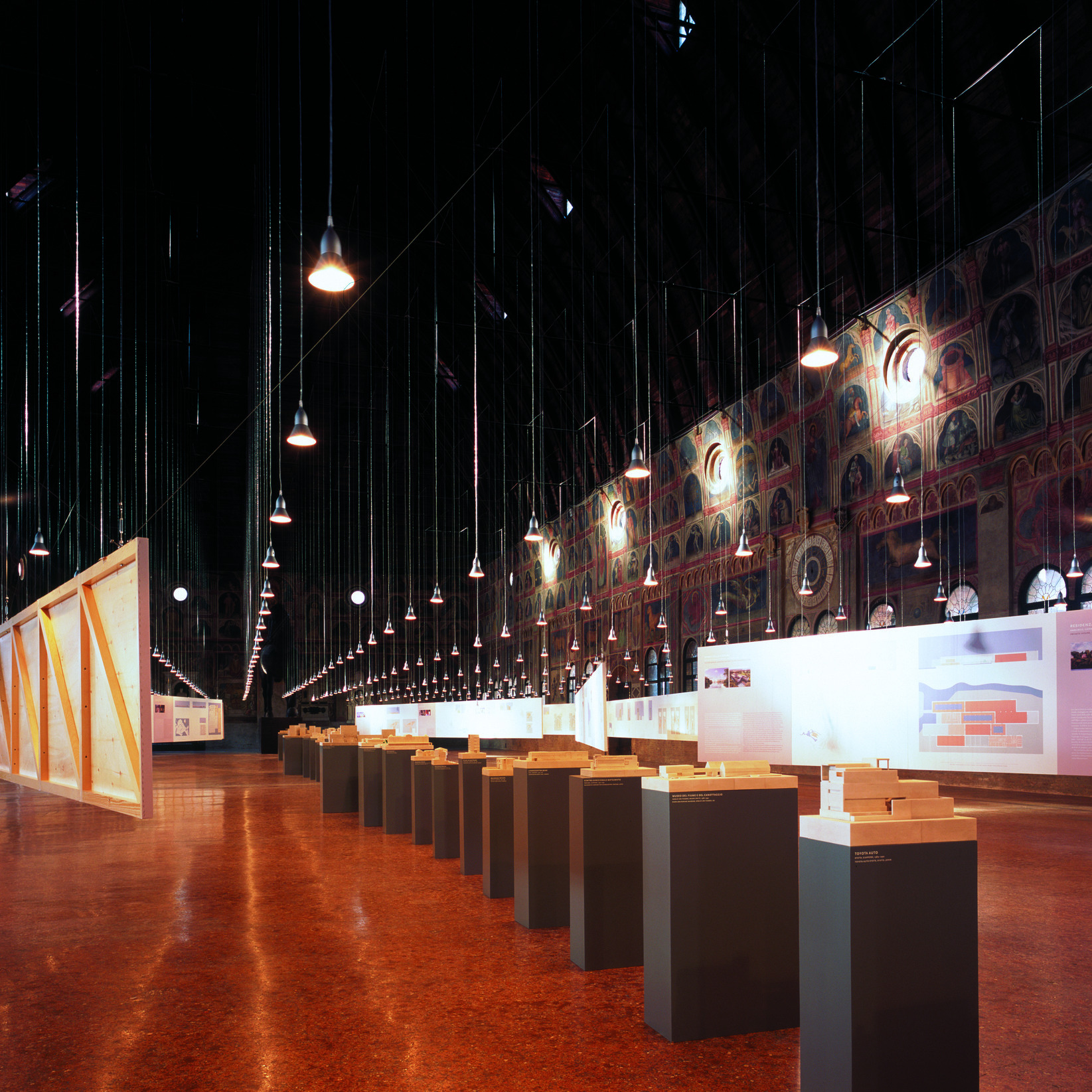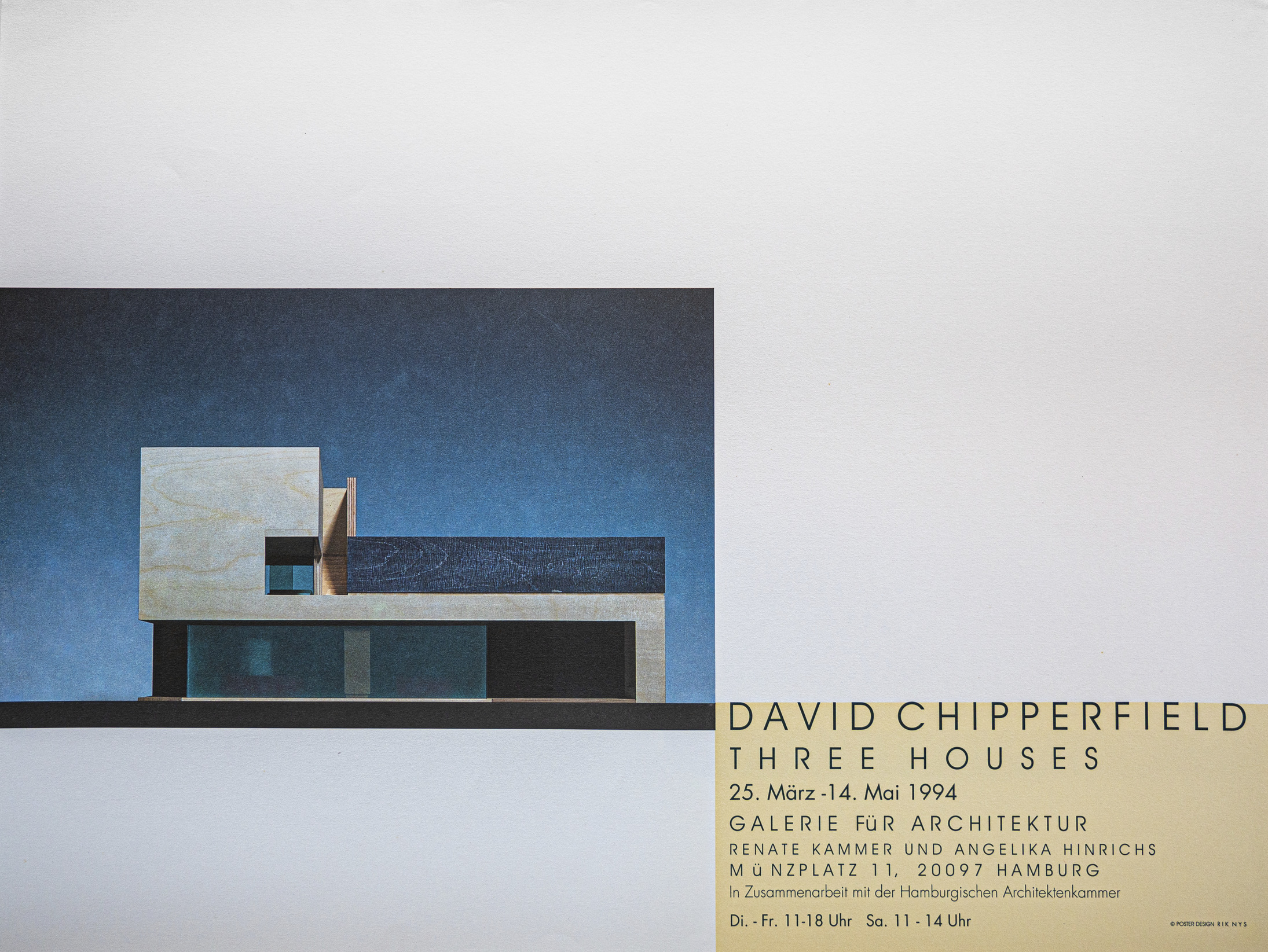‘The Neues Museum, Berlin – Restoration, Repair and Intervention’ at Sir John Soane's Museum
London, UK
2008
Ahead of the opening of the Neues Museum in October 2009, Sir John Soane's Museum hosted an exhibition dedicated to the complex Berlin project undertaken by David Chipperfield Architects in collaboration with Julian Harrap Architects.
The project brief for the Neues Museum project had called for the existing building fabric to be treated as ‘an architectural monument of the highest historical, artistic and scientific importance’, and the focal point of this exhibition was not so much the delicate infill of the missing parts of the actual building, but rather the sophisticated unravelling of two dimensional layers as annotated in a series of ‘working drawings’. Dubbed ‘the coffee-stained drawings’, they were updated on a daily basis, recording every move on site, inch by inch. They are not the work of a single genius but a palimpsest drawn by many hands.
The process and the conceptual approach of the Neues Museum project have been described by many as ‘creative restoration’. It is clear that each decision was the result of an elaborate process involving designers, curators, historians, restorers and specialists. This bespoke preservation on a room-by-room or fragment-by-fragment basis was both daring and sensitive. The drawings testify to a profound renewal of the building creating a precise equilibrium between restoration, repair and intervention.
Images by Stale Eriksen.
An extract from the exhibition brochure:
Ever since John Ruskin published his moralistic essay1 attacking the 19th century tendency towards historic reconstruction, the argument between those who wish for monuments to be rebuilt to simulate their original glory visually and those who wish to preserve the building fabric as the physical evidence of history has been constantly rehearsed.
Nowhere has this debate been so well and so fiercely articulated as in post-war Germany. The argument, inevitably a complex cocktail of emotion and intellect, draws upon the conflicting desires to remove the ‘rubble and the memories’ and conversely the desire to put back what was lost.
Like the paradox of the boat of Theseus, the debate requires us to consider the method by which we preserve our history and to what degree we destroy or confuse meaning and reality in the process of restoration or preservation.
Despite inheriting the clear guidance of the historian Georg Dehio who argued ‘conserve not restore’2, despite the clear direction of the Venice Charter3 and despite the freedom from a modernist agenda that sought to make a tabula rasa (‘Nothing will be achieved if we don’t clear away every ruin along with the mental debris’4), the prevailing prejudice has continuously tended towards historical restoration.
It is unfortunate that the argument has become so polemic; every situation needs to be considered on its own merits. Reconstruction, conservation, restoration, renovation, and repair are all at our disposal; no technique has a moral certitude of its own, only the purpose of its application can invest it with one.
A few specific conflicts best define the ambitions of the battle. We can think of the total but (in my opinion) justified rebuilding of Goethe’s birthplace in Frankfurt5 as a symbol of Germany’s growing desire to reclaim cultural dignity from the rubble mountains; Egon Eiermann’s articulate collage of ruin and modern intervention for the Kaiser Wilhelm Gedächtniskirche in Berlin; the radical reinterpretation of the Pinakothek in Munich by Hans Döllgast; and finally the much celebrated reconstruction of Dresden’s Frauenkirche as a testament to the public will to see once again the symbolic silhouette rise from the piles of stones that sat as a haunting presence since the war.
The recent decision by the German Parliament to instruct the Federal Government to rebuild the Berlin Schloss, including three of its baroque façades, elevates the prejudice for historical reconstruction from being the territory of the public and the media to that of the State.
Against this background the restoration of the Neues Museum has been planned and carried out. Desiring neither to imitate nor invalidate the remaining complex of ruined fabric - a Piranesian structure of bricks and architectural fragments - our concern has been motivated by the desire to protect and to repair the remains, to create a comprehensible setting, and to reconnect the parts back into an architectural whole.
The project has required the construction of large missing sections of the building as well as the repair and consolidation of the remaining parts. It has been our ambition to bind these two activities into a single approach, the new and the old reinforcing each other, not in a desire for contrast but in a search for continuity.
This intention of continuity and completeness has been carried out within a philosophical and technical approach that elevated the protection of original fabric to its central credo. This approach inevitably denies the ambition of ‘making things as they were’. Historical reconstruction would require the suppression, if not destruction, of original material in a desire for ‘the made new again’.
The project, while dealing with the philosophical concerns of restoration, has also had to deal with the not inconsiderable technical task of achieving thermal and environmental standards, as well as the organisational requirements of a modern museum and a building that forms (via the new archaeological promenade) part of the Museum Island ensemble of museums and their archaeological and fine art collections.
The meticulous process of repair and restoration, carried out under the guidance of Julian Harrap, makes explicit the process as a series of informed and careful judgements, balancing the status of the piece with the vision of the whole. This approach pervades the whole project, ensuring that the new and the old, the original and the repair, the restoration and the intervention, are fused together into a singular whole.
At the larger scale the realisation of the concept of continuity and completion has been achieved by the construction of new simple volumes and surfaces in brickwork and pre-cast concrete. These new volumes, while supportive of the concept of completion and avoiding the imitation of historical detail, have a sufficient scale that demands that they must establish their own presence.
If the concept of repair is then to link together surfaces, to bridge between original elements, to bind fragments into a whole, scale is critical. A missing part of a plaster wall sets less challenge than a missing wall or part of a room. This ‘bridging dimension’ requires a different contribution of the repair (or bridge). A small repair needs no quality of its own; a large one, if it is not just to become a lifeless and empty ‘placeholder’, must have a physical and material character of its own.
Herein lies the task - to develop strategies and techniques that deal with repair of different scales yet are consistent to an approach. At the largest scale the repair becomes an intervention and requires its own ‘story’. The Neues Museum contains a series of major interventions (moments where the neutral imitation of the original was judged to be insufficient). These interventions inevitably occur where the damage was greatest: the staircase hall, the south-east cupola, the north-west wing, and the Egyptian courtyard.
The dynamic correspondence between repair, conservation, restoration, and intervention has evolved through continuous dialogue not only between the participants in this process - client, conservationists, planners, and restorers, but also with the potent remains of Stüler’s extraordinary building.
David Chipperfield, June 2008
Footnotes
1 ‘The Lamp of Memory’ from The Seven Lamps of Architecture by John Ruskin. Ruskin admonishes the practice of historical restoration ‘Do not let us talk then of restoration. The thing is a lie from beginning to end.’
2 Georg Dehio, art historian, gave a lecture in Strasbourg warning against the excesses of restoration. ‘Conservation aims to mention the existing - Restoration aims to recreate the non existing (the lost) on the one hand is a reduced, faded reality – but invariably reality on the other is fiction.’ ‘The Protection and Preservation of Monuments in the Nineteenth Century’, an address given at the university on 27 January 1905.
3 The Venice Charter (1964 Charter for the Conservation and Restoration of Monuments and Sites) Article 9, ‘The process of restoration is a highly specialized operation. Its aim is to preserve and reveal the historic value of the monument and is based on respect for original material and authentic documents. It must stop at the point where conjecture begins.’
4 Hans Schippert
5 The proposed rebuilding of the Goethe house in Frankfurt provoked furious debate. The justification was not from the point of view of the physical but the symbolic ‘…we rebuilt the house as a symbol of the unity of the people, as a symbol of peace.’ Georg Hartmann, Chairman of the Freie Deutsche Hochstift 1951.






